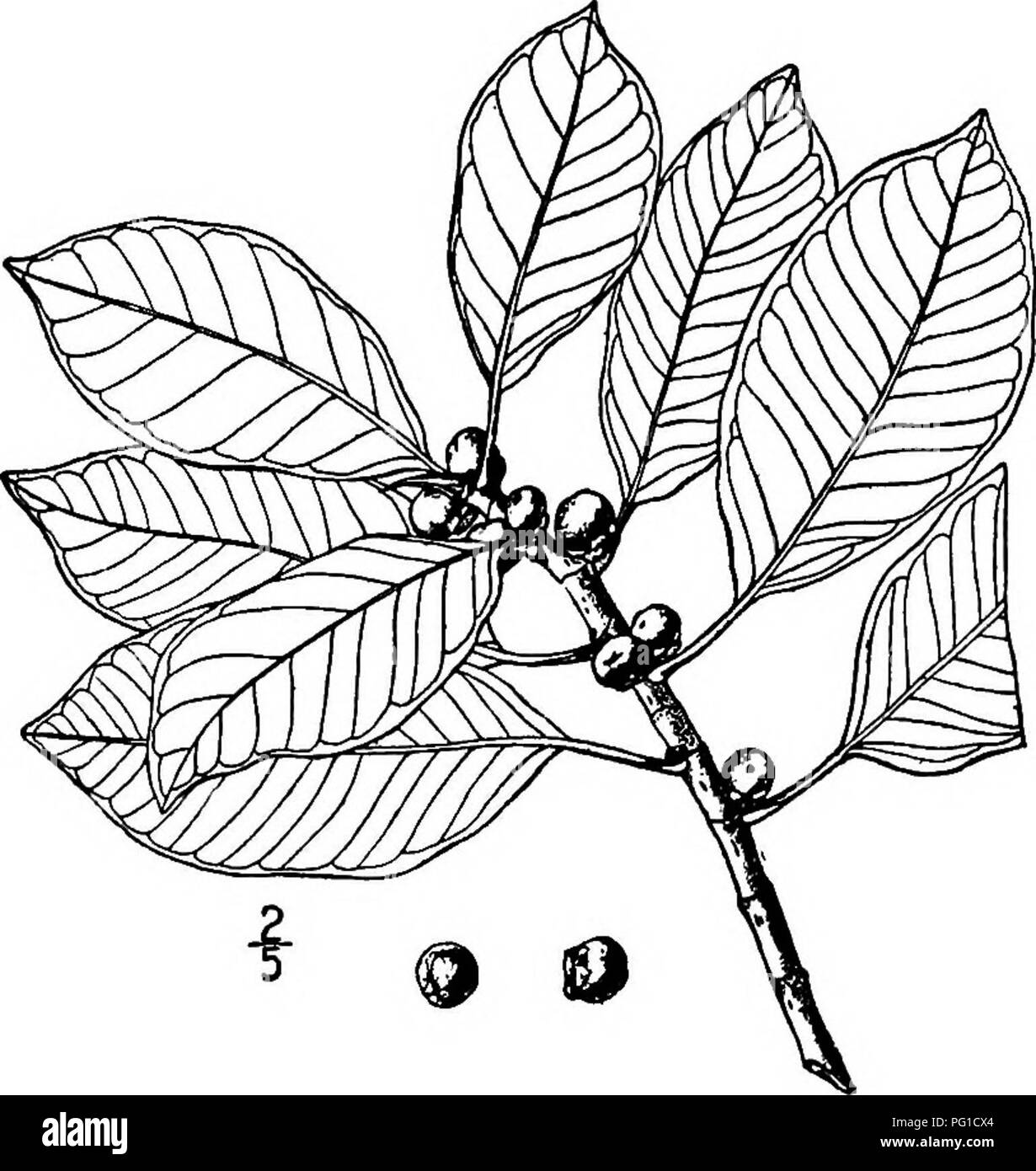. North American trees : being descriptions and illustrations of the trees growing independently of cultivation in North America, north of Mexico and the West Indies . Trees. Golden Fig 369. Fig. 327. — Golden Fig. I. GOLDEN FIG—Ficus aurea NuttaU This tree starts into life as a parasite; the seed germinating in the crevices of the bark of other trees, produces aerial roots which, when they reach the ground, take root and become trunks; often several of these descend parallel, and sur- rounding the trunk of their host, finally come together and strangle, it. The branches also send down roots,

Image details
Contributor:
Central Historic Books / Alamy Stock PhotoImage ID:
PG1CX4File size:
7.2 MB (339.5 KB Compressed download)Releases:
Model - no | Property - noDo I need a release?Dimensions:
1538 x 1625 px | 26 x 27.5 cm | 10.3 x 10.8 inches | 150dpiMore information:
This image is a public domain image, which means either that copyright has expired in the image or the copyright holder has waived their copyright. Alamy charges you a fee for access to the high resolution copy of the image.
This image could have imperfections as it’s either historical or reportage.
. North American trees : being descriptions and illustrations of the trees growing independently of cultivation in North America, north of Mexico and the West Indies . Trees. Golden Fig 369. Fig. 327. — Golden Fig. I. GOLDEN FIG—Ficus aurea NuttaU This tree starts into life as a parasite; the seed germinating in the crevices of the bark of other trees, produces aerial roots which, when they reach the ground, take root and become trunks; often several of these descend parallel, and sur- rounding the trunk of their host, finally come together and strangle, it. The branches also send down roots, which, acting in the same way, produce additional trunks, and eventually form a compound tree, often covering a large area. Such a specimen near Miami is said to have covered a quarter of an acre of ground. This tree is abundant in hammocks of penin- sular Florida, the Keys, the Ba- hamas, and grows also in Cuba, often reaching a height of 20 me- ters, with a trunk diameter of 12 dm. The bark is about 12 mm. thick, gray or brown, smooth or scaly, and upon peeling off exposes the nearly black inner layers. The twigs are stout, thick and pithy, smooth, bright yellow, with pale lenticels, large leaf scars, and encircling stipule scars. The leaves are persistent, thick and leathery, oblong, oval or eUiptic, 3 to 10 cm. long, sharp or short taper-pointed at the apex, entire on the margin, yellowish green, smooth and shining, with indented midrib above, pale, smooth and slightly shining, with yellow midrib, beneath. The leaf-stalk is short; the reddish stipules encjose the young leaves, which in falling leave nearly round scars. The receptacles are depressed-globose, sessile or nearly so subtended by several bracts, sometimes in pairs, with a small lateral opening near the top; the reddish flowers within it are separated by small scales, sessile or stalked. The perianth of the staminate flowers is 2- or 3-lobed; the stamens have stout flattish filaments some- what longer than the